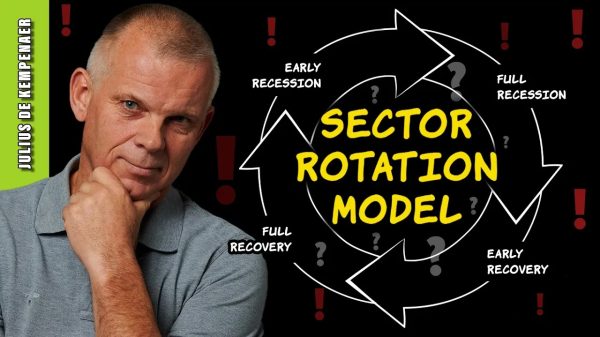A few years back, Sen. Bernie Sanders (I-VT) and Rep. Ro Khanna (D-CA) offered, in the pages of USA Today, what they obviously believe to be an economically airtight argument in favor of the minimum wage:
If Walmart can afford $20 billion for stock buybacks to enrich wealthy shareholders, it can afford to raise the pay of its workers to a living wage. It would cost Walmart less than $4 billion a year to raise its minimum wage to $15 an hour. Taking this step would benefit nearly one million of its struggling workers.
Earlier this year a spokesman for California governor Gavin Newsom offered the same argument to justify that state’s recent hike in the minimum wage for workers at fast-food restaurants. As recounted by the Wall Street Journal, this spokesman declared that “fast-food companies can afford to give their workers a deserved bump in pay.”
The argument offered here by Sanders, Khanna, and Gov. Newsom’s office is common. Rarely does a semester pass that I’m not asked by a student – following a lecture on the economic consequences of minimum wages – why “rich” companies, such as Walmart and McDonald’s, would cut employment when minimum wages rise. “They can afford it!” my students protest. “These companies are highly profitable and have lots of assets.”
As gently as I can, I break the news to my students that they’re not thinking straight.
The most obvious error in using the “they can afford it” argument to justify a hike in the minimum wage is that having on hand enough cash to purchase something at a particular price is hardly a condition sufficient to ensure that such purchases will be made. Bernie Sanders, Ro Khanna, and my protesting students presume that if the minimum wage is hiked, Walmart and other employers of low-skilled workers will simply dip into their cash reserves to cover the costs of paying higher wages. But this presumption is mistaken. Even if Walmart has in reserve billions of dollars of cash, nothing compels Walmart to spend any of these reserves on higher wages. The ability to pay for something doesn’t make purchasing that something an attractive deal for the wealth holder. You, I’m sure, can afford to buy baby diapers. But if you don’t have a baby, the ‘affordability’ of baby diapers to you will not prompt you to run out and buy them. The gain you’d get from owning diapers is less than the cost you’d incur to buy them.
And so it is with the employment of low-skilled workers. Because a hike in the minimum wage pushes the cost of employing some workers above the gain the firm gets from employing these workers, the firm adjusts to the higher minimum wage by changing its employment practices to ensure that every dollar it spends employing labor brings in for the firm more than a dollar in revenue. Workers who cost more to employ at the minimum wage than these workers contribute to any firm’s bottom line will not be employed.
This fact holds true regardless of how profitable or rich firms might be. Just because Elon Musk can afford to employ someone at an annual salary of $100 million to daily shine his shoes doesn’t mean that he’ll employ such a person at that wage if the government declares that the minimum annual pay for shoe-shiners is $100 million. Likewise, just because Walmart might be able to ‘afford’ to employ at $15 per hour a worker who generates no more revenue than $11 per hour doesn’t mean that Walmart will employ that person at $15 per hour simply because the government raises the minimum wage to $15 per hour.
There is, however, a deeper economic point: Even companies with unusually high net worth cannot, in fact, afford to pay workers more than those workers contribute to the companies’ bottom lines.
All of a company’s value consists of the assets that it owns, and most of these assets are specific pieces of property with market values such as inventories, delivery trucks, and a brand name. (Even cash held as reserves is an asset that contributes to the company’s bottom line.) To earn revenue, every company uses its assets along with the workers it employs. Walmart’s current net worth is about $500 billion, and it employs roughly 1.6 million workers in the United States. Let’s assume (for purposes of exposition) that a bit more than ten percent – 200,000 – of Walmart workers are low-skilled ones who are each paid $10 per hour. Each of these workers, let’s further assume, contributes $11 to Walmart’s bottom line.
Messrs. Sanders and Khanna, looking at Walmart’s hefty net worth, believe that it can “afford” to pay each of these 200,000 workers $15 per hour – and, therefore, that if the minimum wage is raised to $15 per hour, each of these worker’s hourly pay will rise to $15. But this belief is mistaken for reasons in addition to the one mentioned above.
Suppose that the government raises the minimum wage to $15 per hour and, understanding the above argument, also somehow successfully commands Walmart to decrease neither the number of low-skilled workers it employs nor the attractiveness of any of these jobs. Messrs. Sanders and Khanna would then presumably cheer, proclaiming that the minimum-wage hike is successful. But before joining their cheering section, look more deeply.
For Walmart to continue to employ these 200,000 workers at an hourly wage of $15, it would lose $4 on each one every hour. That’s an annual loss to Walmart of $1,664,000,000. In order to get this hefty sum that’s necessary to overpay these workers, Walmart would have to eat into its assets. It would, for example, buy fewer delivery trucks and repair its existing fleet less frequently; it would hold less inventory; it would allow the quality of its customer service to deteriorate; it would build fewer or only smaller new stores – all of which would reduce the attractiveness to consumers of shopping at Walmart. Walmart’s market valuation would then fall as investors become less keen on owning shares of a company that not only is experiencing declining sales but also is eating into its capital.
As soon as investors catch wind of how Walmart is dealing with the hike in the minimum wage and the accompanying government mandate not to alter its employment of low-skilled workers, investors retreat. Walmart’s market valuation quickly falls not just by the $1.67 billion worth of its assets that it must convert every year into excessive pay for 200,000 workers, but by some larger amount that reflects both the future necessity, year after year, of devouring its own capital but also the reduced efficiency of that company’s operation and resulting diminished prospects for its success in the future.
An enormously rich company such as Walmart might, under these circumstances, continue operating for several years before being driven into bankruptcy. But it’s more likely that, despite its current humongous net worth, Walmart would encounter bankruptcy sooner rather than later. The reason is that investors will quickly flee any company that uses a sizeable portion of its assets, not to increase its future profitability, but instead to extend charity. Walmart’s massive net worth would likely very quickly decline into bankruptcy territory. All of its workers would then lose their jobs.
One additional point is worth mentioning: Even if the above analysis using Walmart were wrong – that is, even if the likes of Bernie Sanders and Ro Khanna are right to insist that a hike in the minimum wage will cause none of Walmart’s and other ‘rich’ corporations’ low-skilled workers to be laid off – the case for raising the minimum wage would not be much strengthened. The reason is that many employers of low-skilled workers do not have large net worths. Relatively few local restaurants, local nurseries, McDonald’s franchisees (which are companies distinct from McDonald’s, Inc.), and local retailers have billions (or even millions) in net worth. Therefore, for the likes of Messrs. Sanders and Khanna to point to the high net worths of companies such as Walmart and McDonald’s, Inc., as a reason why hikes in the minimum wage would have no adverse impact on any low-skilled workers is uninformed and unreflective nonsense.

































